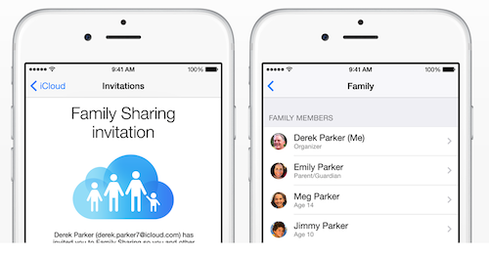Communications Economics: Harvest The Past, Fund The Future
The goal of the modern communications model is to reduce costs while improving productivity and efficiency. Here's an overview of how to get it done.


10 Great iOS 8 Features
10 Great iOS 8 Features (Click image for larger view and slideshow.)
Business decisions always come down to the bottom line, and such is the case with communications technologies and architectures. How much can we save? What's the near certain ROI for our investment?
Hard dollar savings come from reducing the quantity or cost of an organization's required communications products and services. To get those savings:
Shift selected workgroups to the cloud. This isn't a recommendation to move your current on-premises PBX or IP PBX to the cloud. Study after study shows that there's no total-cost-of-ownership savings over multiple years from doing that. Rather, as I described in Secrets To Unified Communications & Collaboration Success, identify the usage profiles for which the PBX isn't the best communications platform.
The most likely candidates? People in roles that require a lot of document collaboration, for whom Office 365, Google Docs, Jive Software, and the like are natural tools. People in field sales and service roles who rely on mobile network connectivity. People in the office whose work is closely linked to cloud-based business applications, such as those from Salesforce.com, SAP, and Cerner. Depending on the industry, the communications tools for as much as 60% of the enterprise workforce could follow their software applications to the cloud and mobile networks. People in all of these groups can access their communications through their preferred devices: desktop, laptop, tablet, smartphone.
[Digital initiatives are where the action is. See: How IT Can Spur Digital Innovation.]
Take advantage of the new architectures. The new, modular IT architecture described in Goodbye PBX, Hello IT Architecture moves the lower-function tasks of a PBX or IP PBX onto directory-enabled gateways. For example, 6 to 10% of PBX lines support fax machines, alarm devices, sensors, safety and parking phones, hall phones, etc. Those lines can be moved to analog modules on gateways. This move is justified based on maintenance savings alone, but it produces even greater savings if it lets you avoid buying PBX capacity and licenses in the first place.
Communicate on the IP network, not the public switched telephone network (PSTN). A previous article, How To Spot An Obsolete Communications Strategy, suggested that many companies have followed their carriers' advice and moved their voice communications from one type of regulated service -- T1 trunks -- to another type -- SIP trunks. It won't be a surprise to learn that the carrier recommendation isn't the lowest-cost solution. Companies can realize savings by moving their VoIP traffic onto their internal IP backbone networks, rather than routing it over the PSTN. Companies can save even more by handing off VoIP communications to much-lower-cost Ethernet backbone providers, which route traffic to known destinations (such as high-traffic customers, partners, and suppliers) over their networks and hand off only the minimum necessary traffic to the PSTN, thus minimizing their customers' contracts for on-premises carrier trunks. Furthermore, unified communications "federation" enables secure peer-to-peer communications, including presence, IM, voice, and video, over Ethernet backbones or the Internet rather than PSTN trunks.
Reduce your PBX maintenance bills and support costs. Moving functions off the PBX makes it possible to reduce annual PBX maintenance bills significantly. Maintenance costs go down as you reduce the size of the PBX, and you may also avoid the pre-payment charges for software upgrades. It's also worth looking at tools that reduce support costs, such as user self-service tools for basic feature changes, help-desk automation software, and improved troubleshooting dashboards.
In addition to those direct savings, companies can also focus on the productivity and efficiency improvements that come from changing business methods and workflows, as described in 7 Ways To Escape Communications Dark Ages and a related CEBP Whitepaper. Communications consumes more than half of employees' time, and the labor costs of communications devour about 20% of organizations' revenues. This is a goldmine opportunity.
Here's a sample roadmap for implementing three high-ROI improvements:
1. Eliminate delays in high-volume transactions, such as help-desk interactions, logistics operations, and processing of documents (such as loan applications). One of the best solutions is a "resource locator" application that uses presence, IM, or software bots to find the needed resources and then connect in the most efficient manner to advance a transaction. At some companies, this application could improve productivity for about 30% of employees. A business case projects that optimizing resource utlilzation would produce a 340% ROI after five years.
2. Remove delays and increase connectivity for collaborative work groups, such as project management, product development, marketing, and general management. A typical company has 30% of employees in these roles. Benefits come from reducing collaboration time by 20 to 25%, which cuts the labor required for the project and accelerates the benefits produced (e.g., new product revenues). A business case projects that enhancing collaboration effectiveness would lead to a 211% ROI after five years.
3. Help your field personnel complete transactions more quickly. Providing field workers with the information they need on their mobile devices reduces the need for emails, voice calls, and voicemail. Users can process transactions on the spot. Typically, mobile users represent another 30% of an enterprise's employees. A business case projects that accelerating transaction completion would produce a 137% ROI after five years.
By tackling each of these three improvements as a specific project, you keep the investment low. Rapid uptake will deliver benefits quickly. In every case, the payback occurs within the first year. If you plan one project per year, in the order listed above, your total five-year business case would produce a 287% ROI, adding a 50% buffer to the investment amount to account for project overhead and unanticipated events.
Any enterprise would welcome an investment roadmap that has a 287% ROI estimate and produces significant improvements to business operations.
The articles I refer to above emphasize that in the new communications model, the goal is to streamline high-cost communications tasks and communications-intensive workflows, reduce costs, and dramatically improve efficiency. Unified communications technologies enable those improvements while aligning communications with the overall enterprise IT architecture using networks, gateways, application servers, and software interfaces on users' preferred devices, whether on-premises or in the cloud. Take action and prosper.
Enterprise social network success starts and ends with integration. Here's how to finally make collaboration click. Get the new Enterprise Social Network Success issue of InformationWeek Tech Digest today. (Free registration required.)
About the Author(s)
You May Also Like
How to Amplify DevOps with DevSecOps
May 22, 2024Generative AI: Use Cases and Risks in 2024
May 29, 2024Smart Service Management
June 4, 2024







